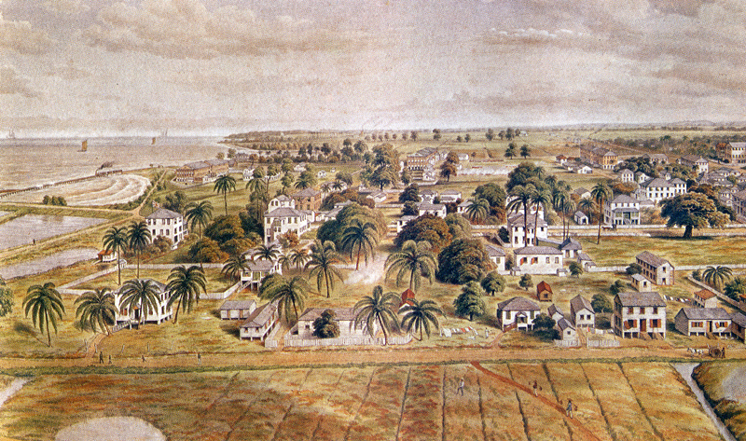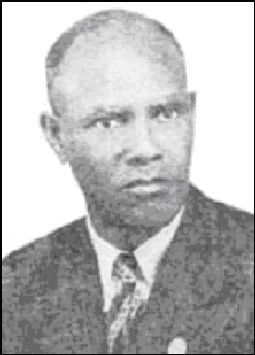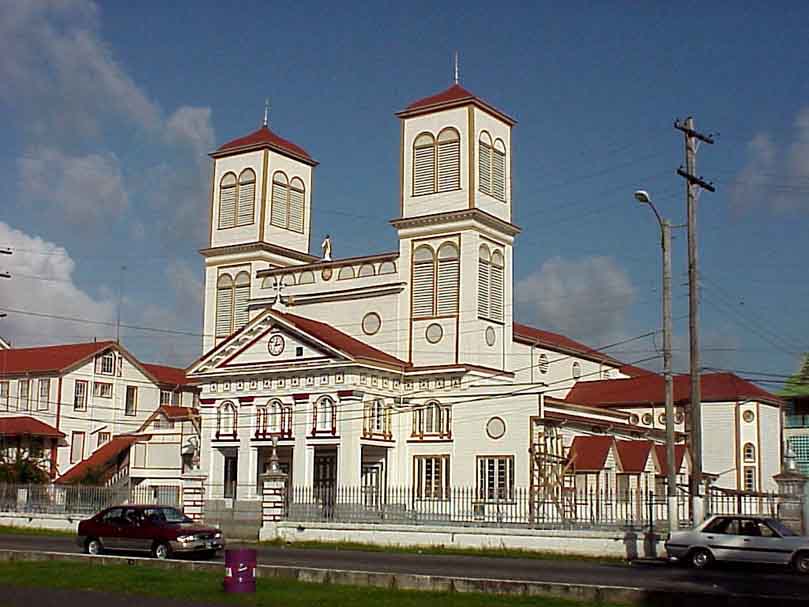Between 1783 and 1800, small ‘towns’ grew up around Stabroek. First was New Town, which was originally established by the French in 1782. In this area, American traders set up offices close to the river and built a wharf where American trading ships discharged and loaded their goods. This wharf became known as ‘American Stelling’ and the road in the vicinity became known as America Street. The main street of Stabroek was Brickdam, which was about one mile long. A muddy embankment, which was erected to keep back the river,…
Read MoreCategory: HISTORY
‘The Father of Trade Unionism’
Hubert Nathaniel Critchlow [often referred to as the “Father of Trade Unionism”] was born in Georgetown on December 18, 1884. His father, James Nathaniel Critchlow, had emigrated from Barbados and was employed as a wharf foreman by the Booker Group of Companies, while his mother Julia Elizabeth Critchlow, née Daniels, was originally from the Essequibo coast. Young Hubert Critchlow attended the Bedford Wesleyan Primary School, but left when he was 13 years old, after his father died. He had reached up to Standard 4 (equivalent to Grade 6 in [today’s]…
Read MoreLost gems of our built heritage
Time changes everything, and some things are forgotten, some remembered, and new memories made. This week, Times Heritage looks back at Guyanese historical architecture, decayed by neglect, dismantled to make way for modern development, or tragically destroyed and now lost to the passage of time. Sacred Heart Church In 1860, the construction of the Sacred Heart Church commenced to accommodate the vast numbers of Roman Catholics in British Guiana. Once designed in a rectangular shape, the original building measured 30.5m x 9.1m. An eastern façade, which became the main façade,…
Read MoreThe History of Parliament at Independence
The Parliament of Guyana was created by the 1966 Constitution of Guyana. The Guyana Independence Act was passed on May 12, 1966 and came into force May 26, 1966. The First sitting of the National Assembly of the First Parliament of the Guyana Parliament was held May 26, 1966. However, according to parliament.gov.gy, strictly speaking, Guyana’s parliamentary system was not created at Independence. In 1831, the three colonies of Demerara, Essequibo and Berbice were united, and the colony of British Guiana was formed. From the years 1831 to 1928, the…
Read MoreRemembering the Birth of a Nation
By Horace Walcott I was one of the pupil leaders selected by my school, Malgre Tout, to attend a rally at the Parade Ground in Georgetown in honour of Queen Elizabeth II. Her Majesty and Prince Phillip were visiting Guyana in February of 1966. I can recall standing a few yards from Her Majesty as she took the salutes of military and scout bands as they marched pass her. I was one of the youngest scouts in Guyana and, though pedantic and introverted, was attracted to the military. There was…
Read MoreAmy Peberdy
Amy Peberdy, who died Sept. 2, 2011, aged 100, played a critical supporting role to her husband, the explorer Philip Storer Peberdy, and spent much of the 1940s travelling with him into the far interior of British Guiana She was born Amy Annie Barrow on September 29, 1910 in Leicester, and left school at 14. She met her future husband while he was working as an apprentice taxidermist at the Leicester Museum and they married when she was 19. In 1936 a restlessness and desire for adventure led them to…
Read MoreHistory of State House
State House, once known as Government House, has been the official residence of several colonial governors and Guyanese presidents over the years. It is said to have had its origins in the 1820s, when the building was originally owned by William Percy Austin, the first Anglican Bishop of Guyana. Ordinances were passed in 1852 and 1863 allowing the purchase of the property to establish an official residence for the governor of what was then British Guiana. After independence, the country’s first president, Arthur Chung chose State House as his official…
Read MorePutting Guyana on the map
The Royal Geographical Society of London entrusted Sir Robert Hermann Schomburgk with conducting an expedition of exploration of British Guiana in 1835; his work, it is claimed, led to the successful Venezuela and Brazil boundary arbitrations for Guyana, then British Guiana. Schomburgk was born June 5, 1804 in the town of Freyburg on the River Unstrut, in Germany. The eldest of five siblings, he showed an early interest in nature, and in the 1820s, while living with his uncle, he learned botany from a professor. Later, after several years of…
Read MoreBritish Guiana in 1913
By Peter Halder The year 1913 was propitious for British Guiana. Sir Walter Egerton was the British governor. For the first time, the head of the British sovereign appeared on British Guiana postage stamps. The first map showing the Corentyne River as the boundary between British Guiana and Dutch Guiana (Suriname) was published. The population of the colony reached some 300,000 and the population of Georgetown was 58,000. The Amerindian population was 13,000. Sugar, known as ‘Demerara Crystal’, continued to be the major export. In 1913, the first airplane flight…
Read MoreHistory of street lighting, tree planting in Georgetown
Have you ever looked at the towering trees on Main Street or around Georgetown and thought of when tree planting in the capital city began? Or thought of the history of the installation of street lights? Gas lighting According to the book “The story of Georgetown” by James Rodway, Stabroek was lighted in early times with lanterns fastened to wallaba posts. The oil used was probably train oil. In 1860 kerosene was introduced and iron lamp posts erected. Rodway also said in his book that gas lighting had been mentioned…
Read More









